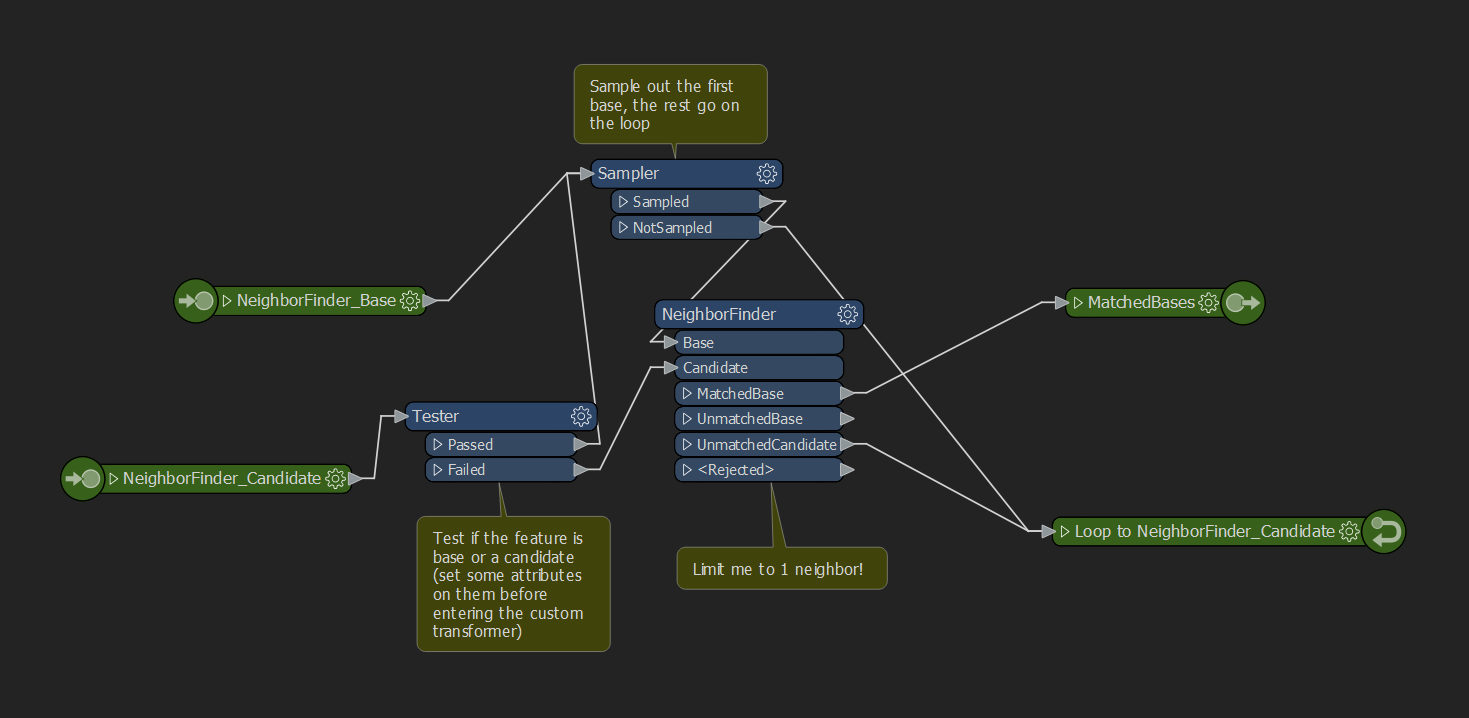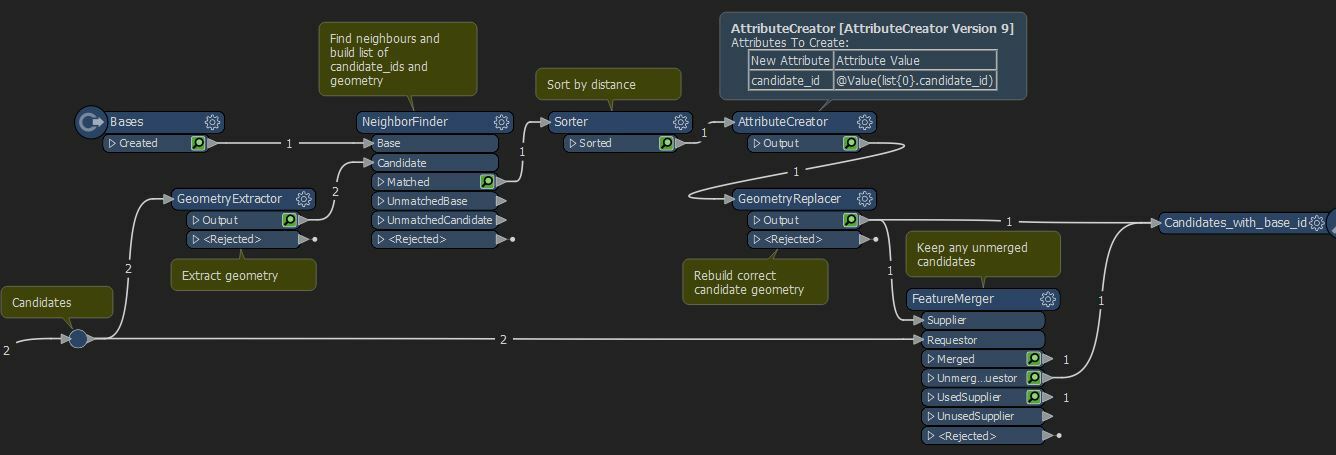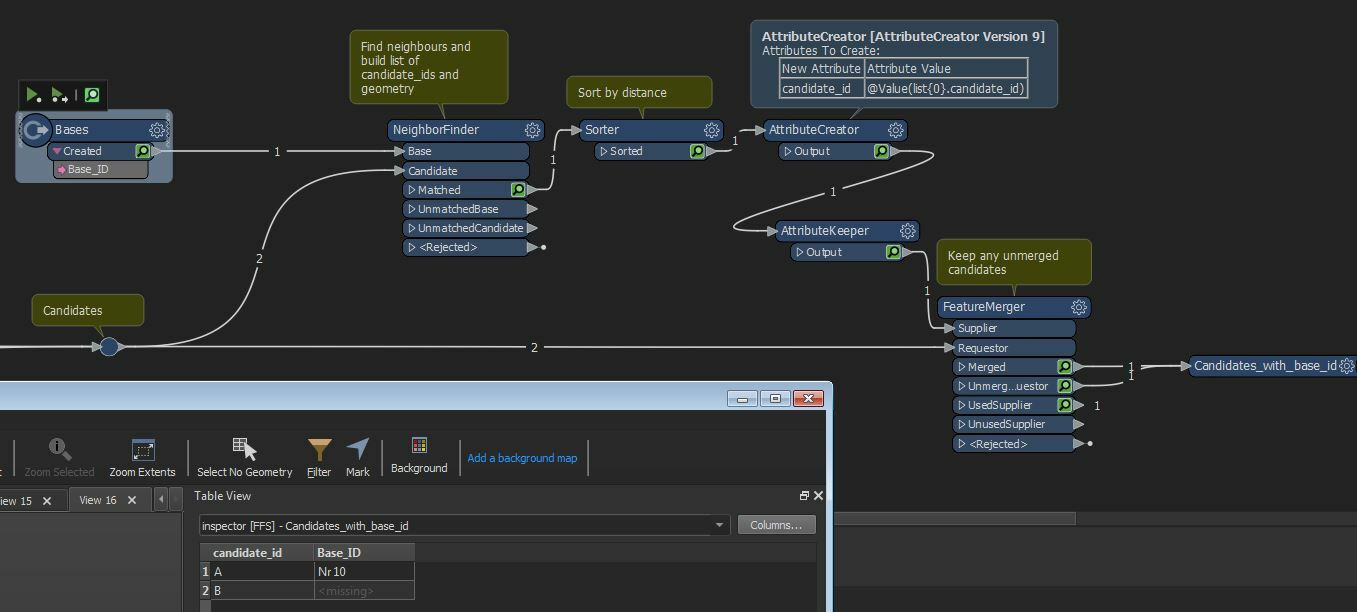Hi!
I would like to make a spatial join between two dataset. I usually use NeighborFinder but my problem is it duplicate each candidate each time a base is near. I would prefer for this time that each candidate can be used only once. So if a candidate match with a base then the candidate is not available for the others bases.
In the example, the blue feature nearest the green, take the value "10" and the other blue feature, take empty value.
Is it possible?
Thanks!












